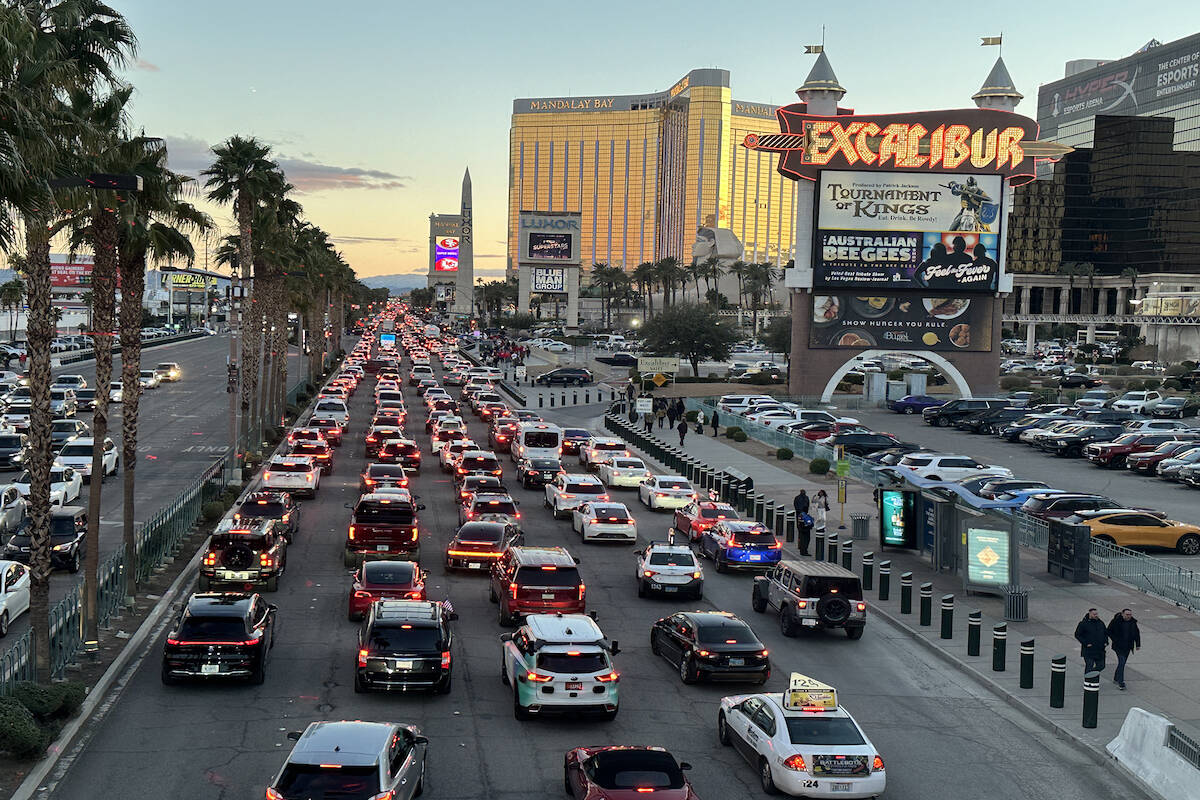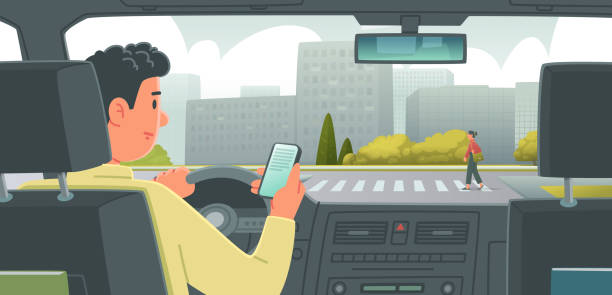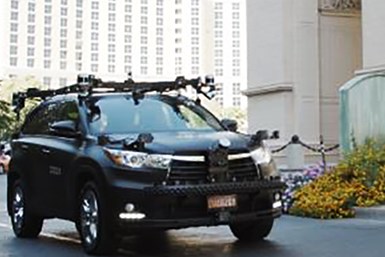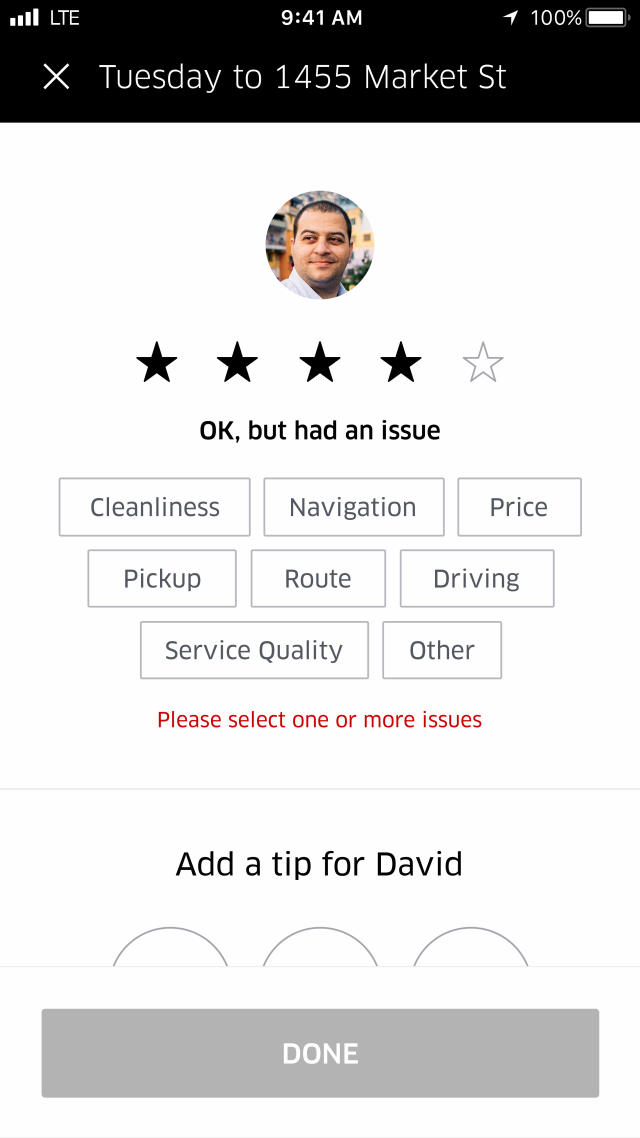In 2022, Las Vegas saw a 22% increase in rideshare-related accidents compared to the previous year. I remember my first time visiting Vegas, overwhelmed by the bright lights and bustling streets. Little did I know, beneath the glitz and glamour, a complex web of factors contributes to the rising number of Las Vegas Uber accidents in this unique city.
The gig economy has revolutionized transportation in Las Vegas, but it’s also introduced new challenges. With demand for rides fluctuating wildly, Uber drivers often find themselves working long hours to maximize earnings. This structure can lead to increased accident risks due to fatigue and pressure to meet demand.
Gig economy workers in Las Vegas are classified as independent contractors, affecting their labor protections and benefits. This classification has far-reaching implications for driver safety and liability in accident cases. The flexible nature of rideshare work can lead to inconsistent income, potentially encouraging longer work hours and increased risk-taking behavior.
According to a University of Chicago and Rice University study, fatal accidents have increased 2-3% nationwide since ridesharing started. This statistic is particularly concerning in a city like Las Vegas, where the 24/7 nature of the entertainment industry creates a constant demand for rides.

Source: financesonline.com
Driver Fatigue and Long Shifts
Long shifts are a common issue for Uber drivers in Las Vegas. With the city that never sleeps, there’s always demand for rides. But this constant availability comes at a cost. Fatigue can significantly impair a driver’s reaction time and decision-making abilities, increasing the risk of Las Vegas Uber accidents.
Studies show that driving after being awake for 18 hours is equivalent to having a blood alcohol content of 0.05%. This statistic is particularly alarming when considering the long hours many rideshare drivers work to make ends meet. The National Highway Traffic Safety Administration estimates that drowsy driving was responsible for 91,000 crashes in 2017, highlighting the severity of this issue.
Uber’s app has a 12-hour driving limit, after which drivers are required to take a 6-hour break. While this policy is a step in the right direction, it may not be enough to combat the fatigue that builds up over days or weeks of long shifts. I’ve spoken with drivers who admit to pushing these limits, especially during high-demand periods or when trying to meet financial goals.
Peak Hour Pressure
During peak hours in Las Vegas, the demand for Uber rides skyrockets. This surge in demand often coincides with higher fares, incentivizing drivers to stay on the road longer. While this might seem like a win-win for drivers and passengers, it can lead to dangerous situations if drivers push themselves beyond their limits.
Surge pricing in Las Vegas can increase fares by up to 2.5 times the normal rate during peak hours. The average Uber driver in Las Vegas makes 33% more during surge pricing periods. These financial incentives can be hard to resist, especially for drivers struggling to make ends meet. However, the increased earnings come with a higher risk of accidents due to fatigue and rushed decision-making.
Peak hours in Las Vegas typically occur between 10 PM and 2 AM on weekends, coinciding with increased fatigue risk. This timing creates a perfect storm of tired drivers, potentially intoxicated passengers, and crowded streets. It’s a recipe for disaster that I’ve seen play out too many times in accident reports and personal accounts from both drivers and passengers.
|
Time Period |
Surge Pricing Multiplier |
Accident Risk Level |
|---|---|---|
|
6 AM – 2 PM |
1.0x – 1.5x |
Low |
|
2 PM – 8 PM |
1.5x – 2.0x |
Moderate |
|
8 PM – 2 AM |
2.0x – 2.5x |
High |
|
2 AM – 6 AM |
1.5x – 2.0x |
Very High |
Multi-App Juggling
To maximize their earnings, many Uber drivers in Las Vegas also work for other rideshare companies simultaneously. This practice, known as multi-apping, can significantly increase a driver’s cognitive load. Constantly switching between apps and managing multiple ride requests can lead to distraction and increased accident risk.
A survey found that 55% of rideshare drivers in Las Vegas use multiple apps simultaneously. Multi-apping can increase a driver’s earnings by up to 30% but also increases the risk of distracted driving. Cognitive load theory suggests that juggling multiple tasks can reduce overall performance and increase error rates. I’ve heard from drivers who struggle to keep up with the demands of multiple apps, often feeling overwhelmed and distracted on the road.
The pressure to accept rides quickly, regardless of which app they come from, can lead to hasty decisions and unsafe driving practices. It’s a balancing act that many drivers feel forced into due to financial pressures, but one that comes with significant risks to both drivers and passengers.

Source: istockphoto.com
Insurance Gray Areas
Insurance coverage for Uber accidents in Las Vegas can be complex. The transition between personal and commercial coverage during different phases of a ride can create confusion. Understanding these insurance nuances is crucial for both drivers and passengers involved in accidents.
Uber provides different levels of insurance coverage depending on the driver’s status (offline, available, en route to pickup, or during trip). Nevada law requires rideshare companies to provide at least $1.5 million in liability coverage when a passenger is in the vehicle. However, personal auto insurance policies often exclude coverage for commercial activities, creating potential gaps in coverage.
I’ve seen cases where drivers found themselves in insurance limbo, caught between their personal policy and Uber’s coverage. It’s a situation that can leave both drivers and passengers vulnerable in the event of an accident. Navigating these insurance complexities requires a deep understanding of both rideshare policies and Nevada insurance law.
Personal vs. Commercial Coverage
The distinction between personal and commercial coverage in Uber accidents isn’t always clear-cut. In Las Vegas, where many drivers use their personal vehicles for ridesharing, this can lead to insurance disputes. Knowing when each type of coverage applies is essential for protecting yourself in case of an accident.
Personal auto insurance typically doesn’t cover accidents that occur while the driver is engaged in commercial activities. Uber’s insurance policy provides up to $1 million in third-party liability coverage when a ride is in progress. However, the period between turning on the app and accepting a ride (Period 1) often has the lowest insurance coverage, with limits of $50,000/$100,000/$25,000 in Nevada.
These coverage gaps can leave drivers exposed to significant financial risk. I’ve worked with clients who were shocked to discover their personal insurance wouldn’t cover an accident that occurred while they were waiting for a ride request. It’s a harsh reality that many drivers don’t fully understand until it’s too late.
For more information on navigating complex insurance claims, check out our guide on handling Las Vegas accident claims. While it focuses on truck accidents, many of the principles apply to Uber accidents as well.
“Uber driver sentenced in Las Vegas crash” [News 3 LV]
Gaps in Coverage
Despite the insurance policies in place, there are still potential gaps that could leave drivers or passengers vulnerable. These gaps often occur during transitional periods or in specific scenarios not clearly defined by existing policies. Identifying and understanding these gaps is crucial for anyone involved in the rideshare ecosystem in Las Vegas.
If a driver’s personal policy doesn’t include a rideshare endorsement, they may be personally liable for damages during Period 1. Underinsured motorist coverage may not apply in all Uber accident scenarios, potentially leaving passengers at risk. Nevada law requires rideshare companies to maintain insurance coverage, but the specifics can vary between companies and may change over time.
These insurance gaps can have devastating consequences. I’ve seen cases where passengers were left with massive medical bills because they fell into a coverage gap they didn’t even know existed. It’s a stark reminder of the importance of understanding your rights and the insurance landscape when using rideshare services in Las Vegas.
The Las Vegas Strip Factor
The Las Vegas Strip presents unique challenges for Uber drivers. The constant flow of tourists, many unfamiliar with the area, combined with the 24/7 nature of the city, creates a perfect storm for potential Las Vegas Uber accidents. Understanding these factors is crucial for both drivers and passengers navigating this iconic stretch of road.
The Las Vegas Strip sees an average of 42 million visitors annually, many of whom rely on rideshare services. This influx of visitors, often unfamiliar with the area and possibly under the influence of alcohol, creates a chaotic environment for drivers. Traffic on the Strip can be up to 60% slower during peak hours, increasing the risk of rear-end collisions and other accidents.
I’ve driven down the Strip countless times, and even as a local, it can be overwhelming. The constant distractions, from flashing lights to jaywalking pedestrians, require a level of focus that’s hard to maintain over long shifts. For Uber drivers, especially those new to the area, it’s a challenging environment that demands constant vigilance.

Source: reviewjournal.com
Tourist Influence
Tourists play a significant role in Las Vegas Uber accidents. Many are unfamiliar with the area, potentially distracted by the sights, or under the influence of alcohol. This combination can lead to unpredictable behavior, both as passengers and as pedestrians, increasing the risk for Uber drivers operating in tourist-heavy areas.
Studies show that tourists are 50% more likely to be involved in traffic accidents compared to locals. This statistic is particularly relevant in Las Vegas, where the majority of Uber passengers are visitors. In Las Vegas, 70% of pedestrian accidents occur within 150 feet of a marked crosswalk, often due to tourists jaywalking. The average blood alcohol content (BAC) of tourists arrested for DUI in Las Vegas is 0.14%, nearly twice the legal limit.
These factors create a challenging environment for Uber drivers. I’ve heard countless stories from drivers about passengers who were too intoxicated to provide clear directions or who insisted on unsafe drop-off locations. It’s a delicate balance between providing good customer service and maintaining safety on the road.
Language Barriers
Las Vegas attracts visitors from all over the world, and language barriers can pose significant challenges for Uber drivers. Miscommunication about pickup locations, destinations, or even basic safety instructions can lead to confusion and potentially dangerous situations on the road.
Las Vegas welcomes over 6 million international visitors annually, speaking a variety of languages. Studies show that language barriers can increase the risk of traffic accidents by up to 25%. While Uber’s app offers translation features, these may not always capture nuances or local slang, leading to misunderstandings between drivers and passengers.
I’ve experienced this firsthand as a passenger, watching drivers struggle to communicate with international tourists. It’s not just about understanding directions; it’s about conveying important safety information and navigating cultural differences. These challenges add another layer of complexity to driving in Las Vegas.
Alcohol-Related Incidents
Las Vegas’s reputation as a party destination means that Uber drivers often encounter intoxicated passengers. While ridesharing has helped reduce drunk driving incidents, it has introduced new challenges. Dealing with inebriated passengers can be distracting and potentially dangerous for drivers.
Since the introduction of ridesharing services, DUI arrests in Las Vegas have decreased by 37%. This is a positive trend, but it comes with its own set of challenges. Incidents of passengers assaulting Uber drivers have increased, with alcohol often being a factor. Nevada law holds bars and casinos partially liable for drunk driving accidents, which can complicate legal proceedings in Uber-related incidents.
The responsibility placed on Uber drivers to manage intoxicated passengers while navigating busy streets is significant. I’ve spoken with drivers who have had to make difficult decisions, like whether to cancel a ride for an overly intoxicated passenger or how to handle aggressive behavior. These situations add stress and potential danger to an already challenging job.
|
Passenger State |
Risk Level |
Recommended Driver Action |
|---|---|---|
|
Sober |
Low |
Normal operation |
|
Mildly Intoxicated |
Moderate |
Increased vigilance |
|
Heavily Intoxicated |
High |
Consider ride refusal |
|
Combative |
Very High |
Contact Uber support |
Traffic Congestion and Infrastructure
The unique layout and constant congestion of Las Vegas streets present challenges for Uber drivers. From the stop-and-go traffic on the Strip to the complex network of hotel driveways and parking structures, navigating this urban landscape requires skill and patience. Understanding these infrastructure challenges is key to reducing accident risks.
Las Vegas ranks 33rd in the U.S. for traffic congestion, with drivers spending an average of 46 hours per year in traffic. The city’s grid system is interrupted by the diagonal Las Vegas Boulevard, creating complex intersections that can be confusing for both drivers and pedestrians. To help alleviate congestion, Las Vegas has implemented over 100 miles of dedicated rideshare lanes since 2018.
Despite these efforts, navigating Las Vegas as an Uber driver remains challenging. I’ve experienced the frustration of sitting in gridlock traffic, watching the minutes tick by as passengers grow impatient. It’s a pressure-cooker
Despite these efforts, navigating Las Vegas as an Uber driver remains challenging. I’ve experienced the frustration of sitting in gridlock traffic, watching the minutes tick by as passengers grow impatient. It’s a pressure-cooker environment that can lead to risky driving behaviors and increased stress levels for drivers.
Source: facebook.com
Rideshare Pickup Zones
To manage the high volume of rideshare traffic, Las Vegas has implemented designated pickup zones, particularly around major hotels and attractions. While these zones aim to improve safety and efficiency, they can also create new challenges for drivers and passengers unfamiliar with the system.
Las Vegas boasts over 50 designated rideshare pickup zones along the Strip. Studies indicate these zones have reduced traffic congestion by up to 15% in high-traffic areas. However, confusion about pickup locations accounts for 23% of reported issues between Uber drivers and passengers in Las Vegas.
These designated zones, while helpful in theory, can be a source of frustration. I’ve witnessed countless confused tourists wandering around, trying to locate their ride, while drivers circle the block, unable to find a safe spot to stop. This confusion not only leads to delays but also increases the risk of accidents as drivers make last-minute maneuvers to reach their passengers.
[This video provides valuable insights into navigating Las Vegas’s rideshare pickup zones, offering tips for both drivers and passengers to ensure smoother and safer pickups.]
Construction Impact
Las Vegas is a city in constant development, with numerous construction projects ongoing at any given time. These projects can significantly impact traffic patterns, forcing Uber drivers to navigate detours and unfamiliar routes. This constant state of flux can increase the risk of accidents, especially for drivers relying heavily on GPS navigation.
Las Vegas currently has over $15 billion worth of construction projects underway. Construction zones see a 24% increase in traffic accidents compared to non-construction areas. Uber’s navigation system updates road closures and construction zones every 15 minutes, but real-time accuracy can vary.
The ever-changing landscape of Las Vegas poses unique challenges for Uber drivers. I’ve experienced the frustration of arriving at a pickup location only to find it blocked by construction barriers. These sudden changes can lead to dangerous last-minute decisions, as drivers struggle to find alternative routes while keeping their passengers satisfied.
Technology and Distraction
While technology has made ridesharing possible, it also introduces new forms of distraction for drivers. In the fast-paced environment of Las Vegas, where split-second decisions can mean the difference between safety and an accident, understanding and managing these technological distractions is crucial.
Studies reveal that glancing at a smartphone for just 2 seconds doubles the risk of an accident. In Nevada, it’s illegal for drivers to use handheld devices while driving, but hands-free operation is permitted. This legal distinction creates a gray area for Uber drivers who rely on their phones for navigation and ride acceptance.

Source: istockphoto.com
App Interface Distractions
The Uber app, while essential for connecting drivers with passengers, can also be a source of distraction. Drivers must navigate the app to accept rides, follow GPS directions, and communicate with passengers. In the bustling environment of Las Vegas, these seemingly small interactions can divert crucial attention from the road.
On average, Uber drivers interact with their app 20 times per hour. Eye-tracking studies show that drivers take their eyes off the road for an average of 3.9 seconds when interacting with rideshare apps. Uber has implemented features like voice commands and auto-accept to reduce app interactions while driving, but the effectiveness of these measures varies.
The constant pings and notifications from the app create a Pavlovian response in drivers, urging them to check their phones even in dangerous situations. I’ve spoken with drivers who admit to feeling anxious if they don’t immediately respond to a ride request, fearing they’ll miss out on earnings. This pressure can lead to risky behaviors and divided attention on the road.
Navigation Challenges
GPS navigation is a double-edged sword for Uber drivers in Las Vegas. While it’s essential for finding passengers and navigating the city’s complex street layout, over-reliance on GPS can lead to distraction and confusion, especially when the app’s directions don’t match the reality on the ground.
GPS signals can be disrupted by the tall buildings on the Las Vegas Strip, leading to inaccurate positioning. Studies show that drivers following GPS directions have a 20% higher chance of making sudden lane changes. Uber’s navigation system is updated weekly to account for road changes, but temporary closures or events may not always be reflected immediately.
These navigation challenges can create dangerous situations. I’ve heard stories of drivers making abrupt turns or stops when their GPS suddenly recalculates, putting themselves and their passengers at risk. The pressure to follow GPS directions while also maintaining awareness of actual road conditions adds another layer of cognitive load to an already demanding job.
Passenger Rating Pressure
The rating system is a core feature of the Uber platform, designed to ensure quality service. However, the pressure to maintain a high rating can lead drivers to engage in potentially unsafe behaviors, such as checking their ratings while driving or prioritizing passenger requests over road safety.
Uber drivers must maintain a minimum 4.6-star rating to remain active on the platform. Studies show that 78% of drivers admit to checking their ratings immediately after trips, often while still driving. The stress of maintaining high ratings has been linked to increased cortisol levels in drivers, potentially affecting decision-making and reaction times.
This constant evaluation creates a unique form of stress for drivers. I’ve spoken with Uber drivers who feel compelled to bend traffic rules or take risks to please passengers, fearing a low rating could jeopardize their livelihood. This pressure can lead to unsafe driving practices and increased accident risk.
Source: yimg.com
Emerging Technologies
As technology evolves, new tools are being developed to address safety concerns in ridesharing. From autonomous vehicles to advanced driver monitoring systems, these technologies promise to reshape the landscape of Uber accidents in Las Vegas. Understanding these emerging trends is crucial for anyone involved in the rideshare ecosystem.
Uber has invested over $1 billion in autonomous vehicle technology. Advanced driver assistance systems (ADAS) can reduce accident rates by up to 40%. Biometric monitoring systems can detect driver fatigue with 90% accuracy. These advancements hold the potential to significantly improve safety, but they also introduce new complexities and potential risks.
“Tesla’s Full Self-Driving tech under scrutiny after Las Vegas crash” [Finimize]
Autonomous Vehicle Testing
Las Vegas has become a testing ground for autonomous vehicles, including those operated by rideshare companies. While this technology holds the promise of reducing human error-related accidents, it also introduces new legal and ethical questions, particularly in the unique environment of Las Vegas.
Nevada was one of the first states to legalize autonomous vehicle testing on public roads. Autonomous vehicles have logged over 1 million miles on Las Vegas streets. Current regulations require a human operator to be present in autonomous vehicles, even if not actively controlling the vehicle.
The introduction of autonomous vehicles in the rideshare industry raises intriguing questions about liability and passenger safety. I’ve had the opportunity to ride in a test autonomous vehicle, and while the technology is impressive, it’s clear that there are still challenges to overcome, especially in a dynamic environment like Las Vegas.

Source: cloudfront.net
Biometric Driver Monitoring
To address concerns about driver fatigue and distraction, biometric monitoring systems are being developed and tested. These systems use various sensors to track a driver’s physical state, potentially alerting them or even intervening if signs of fatigue or distraction are detected.
Biometric systems can monitor eye movement, heart rate, and even brain activity to detect fatigue. Some systems can predict driver fatigue up to 15 minutes before it becomes critical. Implementation of these systems in rideshare vehicles could reduce fatigue-related accidents by up to 70%.
While these technologies show promise, they also raise privacy concerns. I’ve spoken with drivers who feel uneasy about the idea of constant monitoring, viewing it as an invasion of their privacy. Balancing safety improvements with driver autonomy and privacy rights will be a crucial challenge as these technologies develop.
Legal Complexities in Las Vegas Uber Accidents
The legal landscape surrounding Uber accidents in Las Vegas is as complex as the city itself. From determining liability to navigating insurance claims, these cases often involve multiple parties and intricate legal questions. Understanding these complexities is crucial for anyone involved in or affected by an Uber accident in Las Vegas.
Nevada follows a modified comparative negligence rule, which can affect how damages are awarded in Uber accident cases. The statute of limitations for personal injury claims in Nevada is two years from the date of the accident. These legal parameters create a framework within which accident claims must be navigated, often requiring expert legal guidance.
Jurisdiction and Venue Issues
Las Vegas’s status as a major tourist destination adds an extra layer of complexity to Uber accident cases. When accidents involve out-of-state drivers or passengers, questions of jurisdiction and venue can become central to the legal proceedings. Navigating these issues requires a deep understanding of both Nevada law and interstate legal principles.
Cases involving parties from different states may be eligible for federal court if the amount in controversy exceeds $75,000. Nevada courts generally have jurisdiction over accidents that occur within state borders, regardless of the parties’ residency. Choice of law provisions in Uber’s terms of service can impact which state’s laws apply in certain situations.
These jurisdictional issues can significantly impact the outcome of a case. I’ve seen situations where determining the appropriate venue for a case became a legal battle in itself, delaying the resolution of the actual accident claim. Understanding these nuances is crucial for effectively representing clients in Las Vegas Uber accident cases.
Out-of-State Driver Complications
Las Vegas attracts many out-of-state Uber drivers, especially during major events or peak tourist seasons. When these drivers are involved in accidents, it can complicate legal proceedings. Issues of insurance coverage, driver certification, and even basic identification can become more challenging when dealing with out-of-state parties.
Out-of-state Uber drivers must comply with Nevada’s transportation network company regulations while operating in the state. Insurance policies from other states may have different coverage limits or exclusions that can affect claims in Nevada. The process of serving legal documents to out-of-state parties can extend the timeline of legal proceedings.
These complications can lead to prolonged legal battles and confusion for all parties involved. I’ve worked on cases where determining the applicable insurance coverage for an out-of-state driver became a complex legal issue in itself, delaying the resolution of the accident claim.
Casino Property Incidents
Many Uber pickups and drop-offs in Las Vegas occur on casino properties. When accidents happen in these areas, it can blur the lines between public and private property liability. Understanding the interplay between casino security, local law enforcement, and rideshare company policies is crucial in these cases.
Casinos in Las Vegas have their own security and surveillance systems, which can be crucial sources of evidence in accident cases. Nevada law places certain responsibilities on property owners for maintaining safe conditions, which can extend to rideshare pickup areas. Some casinos have agreements with rideshare companies that can affect liability in accident cases occurring on their property.
Navigating these cases requires a nuanced understanding of property law, contract law, and the specific policies of each casino. I’ve seen cases where determining liability became a complex negotiation between the rideshare company, the casino, and multiple insurance providers.
Evidence Gathering Challenges
Collecting and preserving evidence in Las Vegas Uber accident cases presents unique challenges. The transient nature of many witnesses, the rapid pace of the city, and the involvement of multiple parties can make thorough evidence gathering difficult. Understanding these challenges and knowing how to overcome them is crucial for building a strong case.
The average tourist stay in Las Vegas is 3.4 days, making it crucial to gather witness statements quickly. Digital evidence from Uber’s app, including GPS data and trip logs, can be crucial but may require legal action to obtain. Las Vegas has over 20,000 surveillance cameras on the Strip alone, potentially capturing accident footage.
Accident reconstruction experts often use 3D modeling technology to recreate Las Vegas Uber accidents, considering the unique urban landscape. These advanced techniques can be crucial in piecing together the events leading to an accident, especially in complex cases involving multiple vehicles or pedestrians.
Surveillance Camera Access
Las Vegas’s extensive network of surveillance cameras can be a goldmine of evidence in Uber accident cases. However, accessing this footage isn’t always straightforward. Casinos, hotels, and other businesses may have their own policies regarding video release, and the sheer volume of footage can make finding relevant clips challenging.
Most Las Vegas casinos retain surveillance footage for 7 days before overwriting, making prompt requests crucial. Nevada law allows for subpoenas to compel businesses to release relevant surveillance footage. Advanced AI-powered video analysis tools can help sift through hours of footage to identify relevant scenes.
Securing this footage often requires swift action and legal expertise. I’ve worked on cases where surveillance footage provided crucial evidence that completely changed the trajectory of the case. However, I’ve also seen situations where valuable footage was lost due to delays in requesting access.
Digital Evidence Preservation
In the digital age, a wealth of electronic data can provide crucial insights into Uber accidents. From app usage logs to GPS data, this information can paint a detailed picture of events leading up to an incident. However, preserving this data requires quick action and technical know-how.
Uber’s data retention policies vary, with some types of data being overwritten as quickly as 7 days after a trip. Cell tower logs can provide additional location data, but typically require a court order to access. Forensic analysis of smartphones can reveal crucial information about driver behavior leading up to an accident.
Preserving this digital evidence often requires immediate legal intervention. I’ve seen cases where crucial data was lost because the proper preservation requests weren’t made in time. Understanding the types of digital evidence available and how to secure it quickly is essential in building a strong case.
Learnings Recap
-
The gig economy structure of Uber in Las Vegas creates unique pressures on drivers, potentially increasing accident risks
-
Las Vegas’s tourist-heavy environment and complex infrastructure present distinct challenges for Uber operations
-
Technological distractions and emerging technologies are reshaping the landscape of rideshare safety in the city
-
Legal proceedings for Las Vegas Uber accidents involve intricate jurisdictional and evidentiary challenges
Navigating the aftermath of an Uber accident in Las Vegas can be overwhelming. With complex
Navigating the aftermath of an Uber accident in Las Vegas can be overwhelming. With complex legal issues, multiple parties involved, and the unique aspects of the Las Vegas environment, you might feel lost. That’s where Ultra Law comes in. Our team specializes in handling the intricacies of rideshare accident cases in Las Vegas.
We understand the pressures you’re facing and the complexities of your situation. From dealing with insurance companies to gathering crucial evidence, we’re here to guide you every step of the way. Our deep knowledge of local laws and the rideshare industry ensures that your rights are protected and you receive the compensation you deserve.
Don’t let the complexities of your Las Vegas Uber accident case overwhelm you. Contact Ultra Law today for a free consultation. We’re ready to put our expertise to work for you, fighting for your rights and helping you move forward. Remember, in the fast-paced world of Las Vegas, time is of the essence in these cases. Reach out now and let us help you navigate this challenging situation.
For more information on how we approach complex accident cases, check out our guide on navigating motorcycle accidents in Henderson. While the specifics differ, our commitment to thorough investigation and client advocacy remains the same across all types of accident cases.





